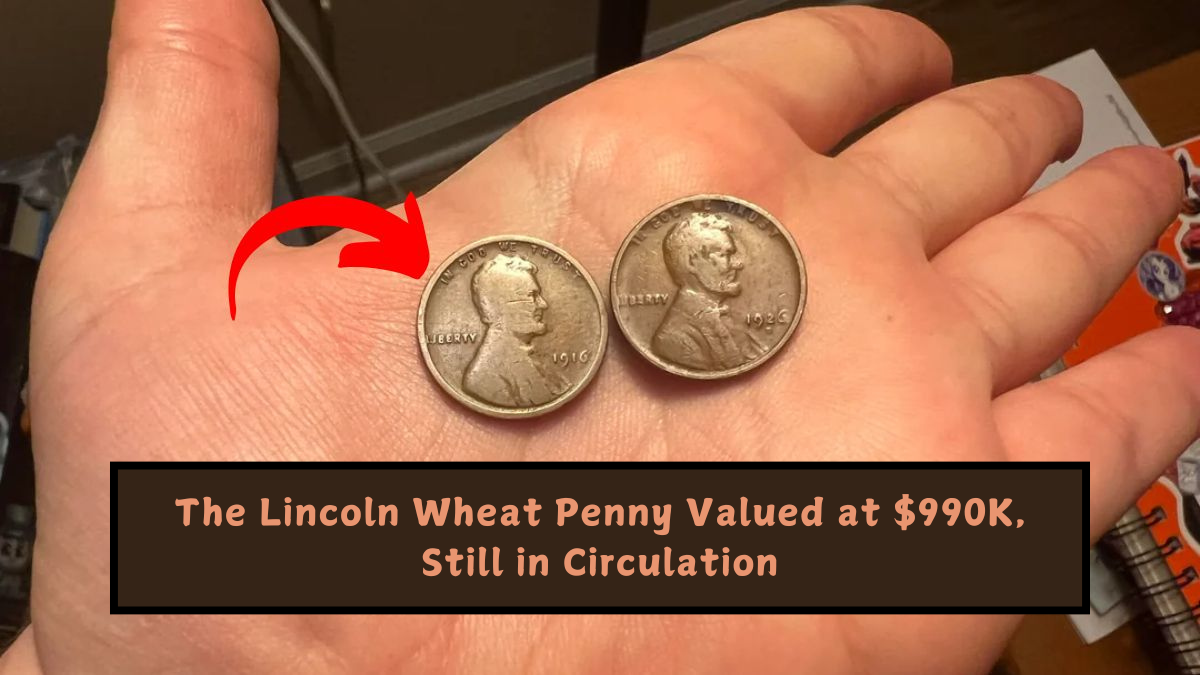The Lincoln Wheat Penny, first introduced in 1909, holds a significant place in U.S. numismatic history. Designed to honor President Abraham Lincoln on the centennial of his birth, this coin became the first U.S. penny to feature a portrait. While most Lincoln Wheat Pennies are worth their face value of one cent, some rare versions have skyrocketed in value, with one particular example reaching a staggering $990,000 at auction.
Let’s explore the fascinating story behind the Lincoln Wheat Penny, what makes it so special, and why there’s still a chance to uncover hidden treasures in everyday circulation.
What is the Lincoln Wheat Penny?
The Lincoln Wheat Penny, also known as the Lincoln Head Penny, was minted from 1909 to 1958. Its name comes from the two wheat stalks featured on the reverse side of the coin. The obverse displays a portrait of President Abraham Lincoln, making it the first U.S. coin to depict a historical figure, rather than the traditional allegorical Liberty. The design, created by Victor David Brenner, quickly became popular and was widely used as U.S. currency for nearly half a century.
Initially minted to commemorate the 100th birthday of Abraham Lincoln, the coin’s design remained relatively unchanged until 1959, when it was replaced by the Lincoln Memorial Penny. Even after its discontinuation as an everyday circulation coin, the Lincoln Wheat Penny continues to hold immense value for collectors and historians alike.
The Rare Penny Worth $990,000
One of the most valuable Lincoln Wheat Pennies is the 1943 Bronze Cent. This coin stands apart due to an error that occurred during World War II. In 1943, in response to copper shortages caused by the war effort, the U.S. Mint switched from using copper to zinc-coated steel for penny production. Most pennies minted that year were made of steel, but a small number of bronze planchets were mistakenly used.
These error coins—called the 1943 Bronze Cent—are incredibly rare. Experts believe that only around 20 of these pennies exist today. Fewer than 10 are known to be in circulation. In pristine condition, a 1943 Bronze Cent has fetched nearly $1 million at auction, making it one of the most sought-after pennies in history.
Why is it Still in Circulation?
Given its immense value, the question arises: Could some 1943 Bronze Cents still be lurking in everyday circulation? While many have already been discovered by collectors, it’s possible that a few remain hidden in old coin jars, tucked away in attics, or even in pocket change. Coins often change hands many times over the years, and due to their ordinary appearance, some rare finds can slip through unnoticed.
The 1943 Bronze Cent looks almost identical to a regular penny, which makes it easy to overlook unless carefully examined. A closer inspection and some simple tests could reveal whether you’ve found a rare and valuable coin.
What to Look For: Identifying a 1943 Bronze Cent
If you suspect you’ve come across a 1943 Bronze Cent, here are some key details to check:
- Date: The year 1943 is stamped on the obverse side of the penny.
- Material: A bronze penny will have a coppery color, unlike the silver appearance of steel pennies.
- Magnet Test: Steel pennies are magnetic, while bronze pennies are not. A small magnet can easily determine this.
- Weight: A bronze penny weighs about 3.11 grams, whereas a steel penny weighs 2.7 grams.
If you think you’ve found a 1943 Bronze Cent, it’s essential to consult a numismatic expert to authenticate it.
Also Read: Bicentennial Quarter Worth $677777 – 4 Valuable Coins That Could Boost Your Wealth
Why is the Lincoln Wheat Penny So Valuable?
The value of rare Lincoln Wheat Pennies, such as the 1943 Bronze Cent, comes down to several factors:
- Rarity: The fewer coins that exist, the higher their value. Coins like the 1943 Bronze Cent, with only around 20 known examples, are extremely rare.
- Historical Significance: Coins from pivotal moments in history, like World War II, carry extra meaning for collectors.
- Condition: Coins in mint or near-perfect condition fetch much higher prices compared to those with wear and tear.
- Collector Demand: The Lincoln Wheat Penny is highly sought after by collectors worldwide, making it a desirable item for many.
The Legacy of the Lincoln Wheat Penny
The Lincoln Wheat Penny has left a lasting mark on American history and numismatics. Its design, rich in symbolism and history, continues to capture the imagination of collectors, investors, and history enthusiasts alike. While most Lincoln Wheat Pennies remain in circulation as one-cent coins, the potential to find rare and valuable versions like the 1943 Bronze Cent keeps the excitement alive for numismatists and casual coin collectors alike.
Conclusion
The Lincoln Wheat Penny, particularly the rare 1943 Bronze Cent, serves as a reminder that hidden treasures can be found in the most unexpected places. With a careful eye and a bit of luck, anyone could come across a coin that could change their fortune.
So, the next time you come across an old penny, take a closer look—it might just be the legendary 1943 Bronze Cent still waiting to be discovered.
FAQs
How can I tell if a Lincoln Wheat Penny is valuable?
Look for rare features such as minting errors, rarity, and the condition of the coin. Consulting with a numismatist can help you assess its value accurately.
Why was the 1943 Bronze Cent so rare?
The U.S. Mint switched to steel pennies during WWII due to copper shortages. A few bronze planchets were accidentally left in the minting machines and used to produce pennies, creating rare error coins.
Where can I find more information about Lincoln Wheat Pennies?
You can explore numismatic websites, coin collector forums, and consult with professional coin dealers and experts for more information.

